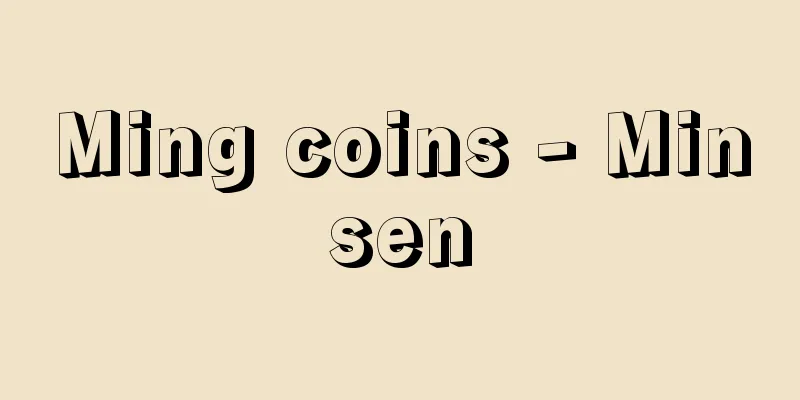Christian literature

|
Literature built on themes of faith, such as the creation of the heavens and the earth by the one and only God, original sin as man's rebellion against God, salvation by the Savior Jesus, and confession and atonement of sins as preparation for the Final Judgment. In this sense, the first to be mentioned are the Old Testament and the New Testament, which are filled with myths, history, stories, poems, biographies, proverbs, fables, etc., as well as their apocrypha and pseudepigrapha. In the 2nd and 3rd centuries, there were Greek works by Origen of Alexandria, the center of Mediterranean culture, and Latin apologetic works by Tertullian and others. Augustine's 4th century autobiography, Confessions, which deals with the suffering of life and conversion, is one of the most important works of early Christian literature. Ambrose, a contemporary of his, is known as the founder of hymns, but his important works had to wait until the establishment of the medieval world in Western Europe. Cadmon of England in the late 7th century and Theodulf of Orléans in the late 8th century both wrote beautiful and pious poetry. Germany's Heliant (Savior) in the 9th century is highly regarded as a free translation of the New Testament. Literature flourished in the late Middle Ages, and representative works of saint legends include Jacobus de Voragine's Golden Legend (13th century) and The Little Flower, a biography of Francis of Assisi. The Arthurian legends, centered around Chrétien de Troyes, have a theme of the search for the Holy Grail used at the Last Supper by the Knights of the Round Table who followed Arthur, the Celtic King of the late 5th century, and the actions of the knights are supported by Christian principles. This group of tales was compiled by the 15th-century Englishman Thomas Malory in his work Morte d'Arthur. As for mystical works, the works of Eckhart of Germany, San Juan of Spain, and Julian of Norwich of England are outstanding and have had a significant influence on later generations. In plays, they diversified from the ceremonial dialogue of the church to morality plays (moralities) that personify death, friendship, and knowledge, miracle plays (miracles) with St. Nicholas as the main characters, and biblical plays (mysteries) in which important scenes from the creation of the world to the Last Judgment were performed by craftsmen's guilds, providing religious consolation and entertainment to the masses. The passion plays performed by villagers in Oberammergau, Germany, every ten years since 1634, are part of this tradition. During the Middle Ages and Renaissance, the greatest work of all was the Florentine Dante's Divine Comedy, unparalleled in scale of conception for its time, and Thomas à Kempis's confessional work, Imitation of Christ, which was long considered second only to the Bible in influence. Medieval European literature was founded on Christian Pietism, but after the advent of humanism and the Protestant Reformation in the 16th century, it rapidly became secularized. One outstanding work from this period is Milton's epic poem Paradise Lost. Based on the Book of Genesis, the work has as its central theme the free will of human beings, and is considered a monumental work in British Christian literature. Metaphysical poetry by clergymen such as Donne and Herbert swarmed around it, and together with sermons by Donne and Andrews, a new religious literature was pioneered. In France, Pascal's Pensées highlighted the suffering of humans who seek absolute truth in a confrontation with God, and its influence is remarkable to this day. In Catholicism, in order to seek salvation for one's soul, one places oneself in collective customs centered on the church. In contrast, Protestantism is different in that it strictly disciplines itself through individual consciousness. A typical literary example of the latter is Christian, the protagonist of Bunyan's Pilgrim's Progress, who travels alone, refusing to succumb to temptation. From the 18th century, known as the Age of Reason, to the 19th century, when the Industrial Revolution rapidly progressed, the tendency toward pantheism, as seen in Wordsworth's poetry, became stronger. Furthermore, new questions were raised about materialism and the origin of species, leading to the rise of skepticism and atheism, and even to the argument that Arnold's art was a substitute for religion. However, in this spiritually barren situation, the dominant theme was the pursuit of ultimate reality, how to seek the fundamental relationship between God and me, and between me and you, in the absurd reality, and the pursuit of the roots of what good, evil, sin, and salvation are. These themes were explored in various ways by such writers and poets as Dostoevsky in Russia, Rilke and Bell in Germany, Mauriac, Bernanos, and Camus in France, T. S. Eliot, Chesterton, G. Green, and Waugh in Britain, Dickinson and Melville in the United States, and Kazantzakis in modern Greece. In Japan, the ban on Christianity was lifted in 1873 (Meiji 6), and so the number of Christians is still small. However, starting with Uchimura Kanzo and Kagawa Toyohiko, and following World War II, the activities of such writers as Endo Shusaku, Sono Ayako, Miura Ayako, Tanaka Sumie, Shiina Rinzo, Shimao Toshio, Ogawa Kunio, and Washizu Shigeo have attracted attention. [Hideo Funato] Source: Shogakukan Encyclopedia Nipponica About Encyclopedia Nipponica Information | Legend |
|
唯一神による天地創造、人間の神への反逆としての原罪、救世主イエスによる救済、最後の審判への準備としての罪の懺悔(ざんげ)と贖罪(しょくざい)など、信仰の主題を基底に構築される文学。この意味から、神話、歴史、物語、詩、伝記、格言、寓話(ぐうわ)などに満ち満ちている旧約、新約の両聖書、その外典、偽典がまずあげられる。 2~3世紀には、地中海文化の中心アレクサンドリアのオリゲネスをはじめとするギリシア語の作品、テルトゥリアヌスらによる護教的なラテン語の作品がある。4世紀、生の苦悩と回心を扱うアウグスティヌスの自伝『告白録』はキリスト教文学初期のもっとも重要な作品。同時代のアンブロシウスは賛美歌創始者として知られるが、重要な作品は西欧中世世界の確立まで待たねばならなかった。7世紀末のイギリスのキャドモン、8世紀末のオルレアンのテオドルフは、ともに美しく敬虔(けいけん)な詩を書く。9世紀ドイツの『ヘーリアント』(救世主)は『新約聖書』の意訳として評価される。中世後期になるにしたがって文芸が盛んになり、聖人伝説の代表作として、ヤコブス・デ・ウォラギネの『黄金伝説』(13世紀)、アッシジのフランチェスコの伝記『小さな花』など。またクレチアン・ド・トロアを中心とするアーサー王伝説群は、5世紀末のケルト王アーサーに従う円卓の騎士たちが、最後の晩餐(ばんさん)に用いられた聖杯を探求する主題で、騎士の行動はキリスト教精神に裏づけられた。この説話群は、15世紀イギリスのトマス・マロリーにより『アーサー王の死』として集大成された。神秘主義的作品としてはドイツのエックハルト、スペインのクルス(サン・ファン)、イギリスのノリッジのジュリアンの作品が優れ、後世への影響は著しい。演劇では、教会の儀式的な対話的交唱から、死、友情、知識などを擬人化した道徳劇(モラリティーズ)、聖ニコラスらが主人公の奇跡劇(ミラクルズ)、天地創造から最後の審判に至る重要場面を職人組合が演じる聖書劇(ミステリーズ)などと多様化して民衆に宗教的慰撫(いぶ)と娯楽を与えた。ドイツのオーバーアマーガウで1634年以来10年ごとに村人によって行われる受難劇はこの系譜に連なる。 中世からルネサンス期の間、最高の作品は、フィレンツェ出身のダンテの『神曲』で、構想のスケールは時代に卓越している。またトマス・ア・ケンピスの信仰告白の書『キリストに倣いて』は聖書に次ぐ影響力を長く保持した。 ヨーロッパ中世文学は、キリスト教の敬虔主義を母胎としたが、ヒューマニズム、宗教改革を経て16世紀以降急速に世俗化の傾向をたどる。この時期傑出した作品としてミルトンの叙事詩『失楽園』があげられる。『創世記』に取材し、人間の自由意志を中心テーマとする作品で、イギリス・キリスト教文学の金字塔と目される。その周辺にはダン、ハーバートら聖職者による形而上詩(けいじじょうし)が群がり、ダンやアンドルーズらによる説教と相まって、新しい宗教文学が開拓された。フランスではパスカルが『パンセ』によって神との対決のなかに絶対的真理を求める人間の苦悩を浮き彫りにし、その影響は現代に至るまで著しい。自己の魂の救いを求めるのに、カトリックでは、教会を中心に集団的慣習のなかに身を置く。それに対してプロテスタントでは、個の自覚において自己を厳しく律していく、という相違点があり、後者の文学的典型として誘惑に負けず孤独な旅をするバニヤンの『天路歴程』の主人公クリスチャンの姿がある。理性の時代といわれる18世紀から、急速に産業革命が進む19世紀にかけては、ワーズワースの詩にみられるような汎神論(はんしんろん)的傾向が強まる。また、唯物論、種の起原に関する新たな問題提起によって、懐疑主義、無神論が台頭し、アーノルドの芸術を宗教の代替とする論まで出るに至った。しかし、この精神的不毛の状況のなかにあって、究極的実在を希求し、神とわれ、われとあなたという根源的関係を、不条理の現実のなかにいかに模索していくか、善・悪・罪・救済とはなにかと根源まで追求していくのが支配的主題となった。ロシアのドストエフスキー、ドイツのリルケ、ベル、フランスのモーリヤック、ベルナノス、カミュ、イギリスのT・S・エリオット、チェスタートン、G・グリーン、ウォー、アメリカのディキンソン、メルビル、近代ギリシアのカザンザキスらの作家、詩人により、これらの主題が多様に追求された。 わが国では1873年(明治6)の信仰解禁以後日が浅く、キリスト教信徒は少ないが、内村鑑三(かんぞう)、賀川豊彦(かがわとよひこ)を経て、第二次世界大戦後は、遠藤周作、曽野綾子(そのあやこ)、三浦綾子、田中澄江(すみえ)、椎名麟三(しいなりんぞう)、島尾敏雄(としお)、小川国夫、鷲巣繁男(わしずしげお)らの作家たちの活躍が注目される。 [船戸英夫] 出典 小学館 日本大百科全書(ニッポニカ)日本大百科全書(ニッポニカ)について 情報 | 凡例 |
<<: Christian Democratic Social Union (CDU)
>>: Women's Christian Temperance Union
Recommend
solo concerto (English spelling)
…The oldest instrumental concerto is the concerto...
Opening - Kaicho
〘noun〙① At temples, statues that are not normally ...
Yachiho [village] - Yachiho
A village in Minamisaku District, eastern Nagano P...
Schizaea dichotoma (English spelling) Schizaeadichotoma
…[Kunio Iwatsuki]. … *Some of the terminology tha...
Cartaphilus - Cartaphilus
…Christ then replied, “Wait for me to come,” and ...
Ajijitou (local head of a clan)
…In the early 16th century, under King Sho Shin, ...
Ouessant (Island) (English spelling)
A small island 20km off the coast of the tip of th...
Silver anchovy - Silver anchovy
...In Tokyo, it is called Kiiwashi, in Lake Haman...
Stinky - Stinky
A perennial plant of the Juncaceae family (APG cl...
Izushiyama
A mountain in western Ehime Prefecture. Its peak ...
Grass City - Soushi
A commercial and trading place established outside...
Village Guide - Shukuson Taigaicho
This is a record of the five Edo-period roads (Tok...
Epipaschiinae
...The larvae of the Japanese cereal moth are pes...
Quail pigeon - Quail pigeon
… Most species live mainly in trees. However, the...
Manokwari (English spelling)
A port town on the northeastern tip of the Cendraw...









